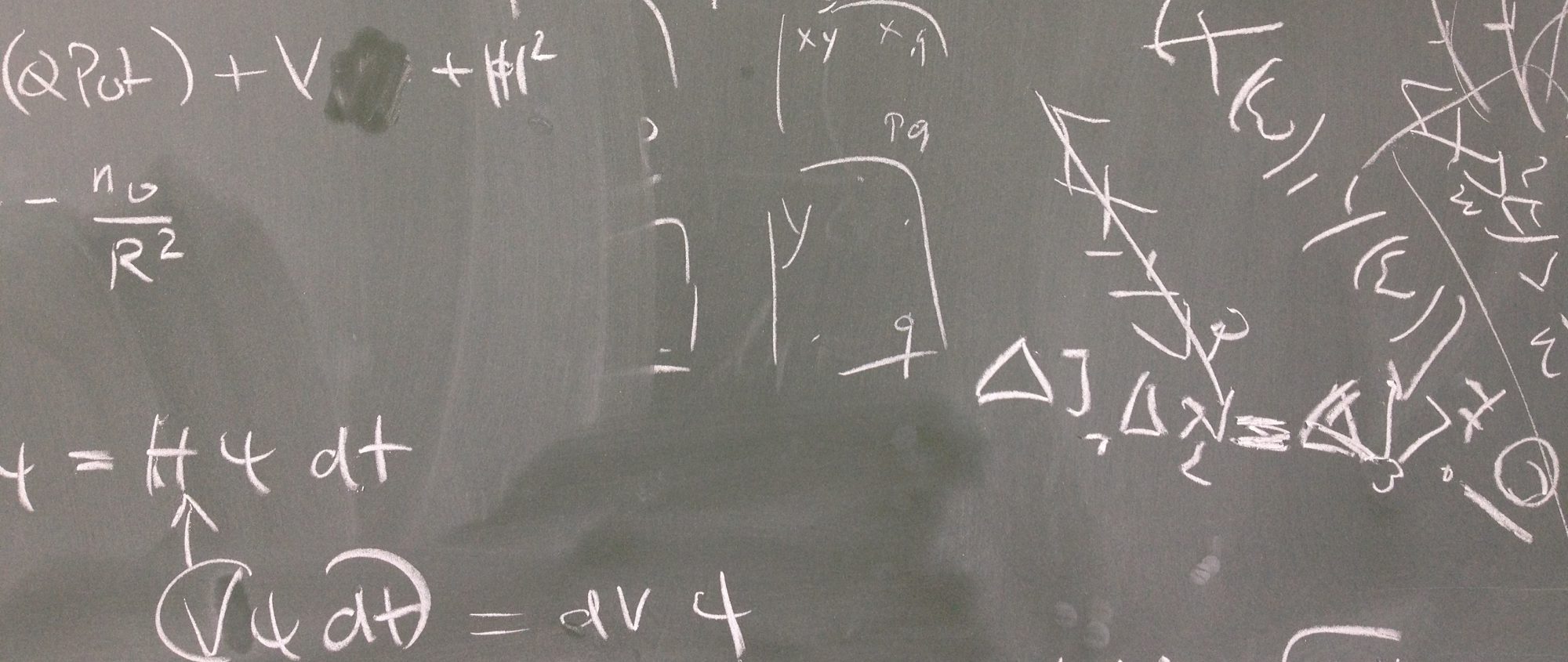20 Oct 2016 [notes by Johannes P. H. and Martin S., expanded by C. Henkel]
— Goals of the Course —
- introduction to interpretations
- and their key ideas,
- provide an overall picture.
How to understand “Interpretation”:
A physical theory is providing a connection between a mathematical model (formalism) and the physical world. An interpretation tries to formulate in ordinary words what the theory (the formalism) “means” and what it tells us about “reality”. In the lecture, we shall try to sketch the corresponding world view (Weltbild). We shall encounter a strange aspect of quantum physics:
there are things that are difficult even to formulate (J. Bell uses the word “unspeakable”), and things that are not even “thinkable” (we shall see what this may mean).
Many interpretations of quantum mechanics come with an elaborate mathematical formalism: we shall try to illustrate their world view and connect the “elements of reality” (a concept taken from A. Einstein’s work) to the mathematical concepts. This may also require to create new ways of speaking about physical reality.
Background and Methods
The lecture should be understood in many places as amateur philosophy. Let us mention the old philosophical problem whether “the world exists” independently of our sensory impressions or whether all our impressions are just the product of our own mind. A scientist who is amateur philosopher will probably recognise herself in the viewpoint of “intersubjective positivism” (or better “realism”):
- Through the communication between persons about impressions related to an object, the object enters our reality. This does not necessarily mean that the object does not exist without talking (which would be an extreme point of view), but if we talk about it, we recognise it in our reality. The word “intersubjective” is meant to emphasize the role of communication for this approach.
- An independent reality may not exist or not be directly accessible to us, but as we exchange information about our observations, we are led to conclude that there are things in reality that we can agree upon — we may infer that they “exist”.
- It may be that two interpretations are equivalent to another with respect to experimental predictions. But that does not mean that the world views behind these interpretations are the same.
Mathematics as a language:
- The lecture tries not to develop too much formalism.
- But it turns out that a careful understanding of the mathematical concepts reveals also a meaningful physical understanding.
- In this way, one can connect the elements of the formalism to “physical objects” of the “outside world”.
Notes
The “Quantum Technologies” flagship is a strategic investment of the European Union with 1 billion (1 Milliarde) euros over the next 5–10 years. The promises of the flagship are related to communication, computing, precision measurements, and simulations, which can be improved by using quantum technologies.
We shall often hear that the results of certain measurements in quantum physics are random and can be predicted only in a statistical sense. But it seems difficult to certify that a sequence of results is random in quantum theory. The mathematical theory of random numbers can help us to understand how this may be done. (Topic not covered in the course.) A server of quantum random numbers can be found at the web site qrng.anu.edu.au. If you want to buy a quantum device that generates random numbers, try www.qutools.com.
Quotation
“Die ganzen Zahlen hat der liebe Gott gemacht, alles andere ist Menschenwerk.” (“God made the integers, everything else is the work of man.”)
Leopold Kronecker, 7 December 1823 — 29 December 1891, was a German mathematician who worked on number theory, algebra and logic.

